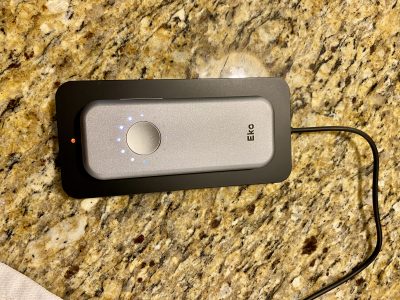Metered Dose Inhalers (MDI) are a true lifesaver to many, and a terrifically convenient way to deliver other medications. One of the big drawbacks to them is that there’s no really accurate way to tell if the MDI is out of medication but is just spewing out propellant. I thought I knew the answer, and it turns out I was wrong (rats).
Yahoo! News – Parents May Not Know When Asthma Inhaler Is Empty
…
According to experts, the only reliable way to judge whether a canister is empty is to subtract the number of doses used from the total available number listed by the manufacturer.The new findings support this advice, according to Rubin and his colleagues, who also debunked another way some parents in the study used to define “empty”: seeing whether the medication canister floats in water. If it sinks, some parents believed, there is still medication left. If it floats, it’s empty.
Not only was this method ineffective when the researchers tested it, but it also allowed water into the canisters’ valve opening 27 percent of the time, making the practice “potentially dangerous,” they note.
Keeping track of doses by counting can be difficult and prone to error, the authors acknowledge. However, they add, until effective built-in dose counters are added to metered-dose inhalers, counting doses the old-fashioned way remains “the only accurate method” for judging when a canister is empty.
I have always thought the ‘floating upright vs. on its side’ test was accurate, but apparently not.
Somebody could retire on this idea: a foolproof way to count doses delivered, or medication remaining in an inhaler.
also posted at LingualNerve




Well, dang. I thought that was accurate, too; in fact I have taught patients that method.
How on earth are you supposed to keep track of inhaler doses? Hash marks on the side of the can? With what, a nail file or steak knife?
Give me a break. (Yes, I am easily irritated today.)
I use a totally unscientific way to tell when mine are out of medication. If I use it and it doesn?t relieve my shortness of breath, I throw it away and get a new one. I too had thought that the floating method was accurate. I never used it myself but I did know about the technique.
Perhaps it’s that my technique isn’t quite what it ought to be, but even when one puff stops the wheezing (so at least some of the med must be reaching my lungs), I can still taste the medicine. When an inhaler is out, (or nearly out) I’ve found that the taste usually just isn’t there.
Flotation clearly is the wrong method.
The good news is that nearly all ICS pressurized metered dose inhalers have 120 doses so if given as 2 puffs bid each will last just 1 month. Albuterol has 200 puffs. If this is being used daily the asthma is being under-treated and additional therapy is needed. Otherwise just replace every 3 months and you shoul be OK.
As of next year the FDA will require pMDIs to have a dose-counter.
You can also use DPI’s for patients who have the ability. Both the Diskus and the Turbuhaler have dose counters.